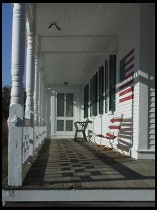
Choosing a Digital Camera
by Philip Greenspun; created 1999
Site Home : Photography : Choosing a Digital Camera

by Philip Greenspun; created 1999
Site Home : Photography : Choosing a Digital Camera
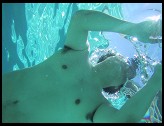 We live in strange
times. Remember the 1970s when magazines and newspapers had digital compositing
systems but word processors weren't widely available? Content originated on
typewriters and had to be imported (rekeyed) into digital form. That's where we
are in the late 1990s. Most imaging professionals have a computer and software
capable of processing digital images. But content originates on film and has to
be scanned. So only a tiny percentage of images that people make are amenable to
computer processing.
We live in strange
times. Remember the 1970s when magazines and newspapers had digital compositing
systems but word processors weren't widely available? Content originated on
typewriters and had to be imported (rekeyed) into digital form. That's where we
are in the late 1990s. Most imaging professionals have a computer and software
capable of processing digital images. But content originates on film and has to
be scanned. So only a tiny percentage of images that people make are amenable to
computer processing.
The world of photography will change when most content originates in computer-readable form. That means the world will change when the average person converts from a film-based camera to a digital camera.
Thus before we get into thinking about which digital camera is best, we have to consider whether a film or digital camera is better for a particular application.
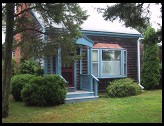 How much quality do you lose by using a digital camera? Maybe none. In fact, a
digital camera is better quality than a film camera in many important respects!
The easiest to understand specification is resolution. A 35mm film-based camera
will crush any digital camera in the number of good pixels. But maybe you care
about color balance under mixed lighting. A digital camera is actually better
than a film camera. Maybe you care about scale, the ability of the camera to
capture detail in the brightest highlights and darkest shadows of a scene. A
cleverly designed digital camera may be much better in this respect than a
film-based camera.
How much quality do you lose by using a digital camera? Maybe none. In fact, a
digital camera is better quality than a film camera in many important respects!
The easiest to understand specification is resolution. A 35mm film-based camera
will crush any digital camera in the number of good pixels. But maybe you care
about color balance under mixed lighting. A digital camera is actually better
than a film camera. Maybe you care about scale, the ability of the camera to
capture detail in the brightest highlights and darkest shadows of a scene. A
cleverly designed digital camera may be much better in this respect than a
film-based camera.
The key word in the above sentence is clever. Most digital cameras come from Japanese companies with a lot of engineering experience making imaging pipelines that run from a CCD to an analog video tape (i.e., what is inside a camcorder). They've adapted these pipelines to the new DV camcorders. So why not adapt them to the digital still camera? It is mostly the same thing except you write one frame at a time to some sort of computer memory. The flaw in this argument is that the CCD sensors are capable of much more dynamic range than one can record in an NTSC video signal. There has thus been very little pressure to make the pipeline milk the ultimate in shadow and highlight detail from the sensor. However, if one were to store digital still images with 16 bits per pixel, it would be worth trying to squeeze all the dynamic resolution from the sensor. Cameras like the Nikon D1 and Canon D30 are just the beginnings of the trend away from 8-bit cameras.
Over the next few years, expect to see some interesting digital cameras from non-traditional companies with strong backgrounds in instrumentation (e.g., Hewlett Packard).
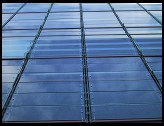 You need at least 200 pixels-per-inch
for photographic quality. So for a 4x6 proof print to stick on the fridge, an
800x1200 image will be fine. For an 11x14 you'll want 2200x2800 (6
megapixels).
You need at least 200 pixels-per-inch
for photographic quality. So for a 4x6 proof print to stick on the fridge, an
800x1200 image will be fine. For an 11x14 you'll want 2200x2800 (6
megapixels).
Note that the megapixels from a digital camera aren't as good as the megapixels coming from a slide scanner. Slide scanners essentially have three CCDs underneath each pixel, one for red, one for green, one for blue. The array of CCDs in a digital camera is covered by a mosaic of red, green, and blue filters. Thus a digital camera might produce a megapixel of luminance (black and white) information, but only a third as much resolution in the area of color.
The process of mapping those megapixels, each a different color, into a traditional computer RGB format is known as "demosaicing". The quality of the algorithm used to demosaic will affect the final image quality. This is yet another reason not to judge cameras by specifications alone.
To show that you can't judge an image by the numbers, compare the following:
The bottom line for us is that we're not satisfied with the quality of the pixels as they come out of any digital camera. For Web (screen) presentation we reduce the image by 2X and are much happier with the resulting quality.
Conventional marketing wisdom has it that there are only two types of camera consumers: (1) the average person who just wants to push the button, and (2) the professional photographer who needs control and will pay virtually any price. Thus, if you want to control exposure, change lenses, use the lenses from your existing Canon or Nikon 35mm SLR, expect to pay $2500-4,000. Part of the reason that these cameras cost so much is that a 35mm camera lens paints an image 24 x 36mm in size. Digital camera sensors are essentially computer chips. The larger the computer chip, the more likely it is not to work. This is because a single flaw in the silicon wafer may ruin a chip. The larger a chip, the more likely it is to enclose a random flaw in the wafer. Very expensive chips such as Intel Pentiums are usually no larger than 20mm square and these have the benefit of huge manufacturing volumes and enormous capital investment. Making a flawless 24 x 36mm chip in small quantities is going to result in enormous costs.
What should engineers do? Swing to the opposite end of the spectrum. Make a physically very small sensor. A small sensor can be covered by the image coming out the back of a small lens. This makes it tough to build a true wide-angle lens but easy and cheap to build a mid-tele zoom. Most consumers will be grateful that they've not been burdened with excessive weight, size, and cost.
How will it change your photography?
In "Choosing a Medium Format Camera", I allude to the steps in getting an image up onto the wall:
and explain my preference for the 6x6 cm square format because it lets me defer the vertical/horizontal decision until I'm comfortably ensconced at home in front of the light table.
Digital cameras not only force you to make all the choices that you have to make with a 35mm camera, but you also have to edit in real-time. You can't run off to Italy for two months, come back with 60 rolls of film, let them sit in your files for another two months, then start to pick the gems.
Essentially film comes with its own built-in write-once storage medium for the bits that it records. Digital cameras have limited storage space. If you're traveling, you'll have to spend every night figuring out which pictures are worth preserving on a laptop computer's hard drive. The really great ones you'll have to make sure that you e-mail back home or risk losing them if the laptop is damaged or stolen.
Consider the picture at right, the chess master in Harvard Square, taken with an old manual Nikon. Had I been forced to edit this in real-time, I'd probably have tossed it. Yet upon close inspection, the upper-right corner of the frame reveals a contorted photographer! I didn't notice it until many months after I took the picture.
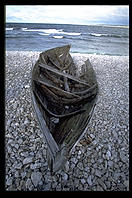 Here are some
reasonable choices:
Here are some
reasonable choices:
Once you get those images on your hard disk, you'll probably want to either